Disclaimer For educational purposes only. Do not use as medical advice
AboutBotanyChinese MedicineCaution
| Health Benefits |
| For: Nose bleeds • Uterine bleeding • Bloody mucous • Bloody urine • Bloody stool • Excessive menstrual bleeding • Bleeding gum • Topical: eczema, itching |
| Attributes: Antifungal • Anti-tumor • Anti-inflammatory • Antibiotic • Antitussive • Antifungal • Antioxidative • Antimutagenic • Expectorant • Cholagogic • Hemostatic • Antiasthmatic |
| Research (sample) |
|
Articles:
|
| Constituents: Camphor • Artemisia alcohol • Alpha thujene • Cineole • Terpenoids • Sesquiterpene • 2-hexenal • Tricyclene • Alpha pinene • Thujyl alcohol • Beta Pinene • Sabinene • Borneol • Isoborneol • Carvone • Eugenol • Bourbonene • Humulene • Copaene • Quercetin • Eupatilin • Matricarin • Lupenone • Fernenone • Matricarin |
| Photos (Click to enlarge) |
|
|
| Fun Facts |
Other Names: Silvery wormwood • Chinese mugwort • Ai cao • Ai hao • Gaiyou • Mugwort
Plant Family: Asteraceae |
| Ai Ye is the herb popularly used in Moxibustion / Acupmoxa. Bei Ai (Artemisia Vulgaris) is often a substitute. |
| Species |
|
Artemisia Capillaris (Yin Chen Hao)• 茵陈蒿 - Popularly used for jaundice. Good for liver diseases and gastric ulcers.
Artemisiae Scopariae (Mian Yin Chen) • 绵茵陈 - the Eurasian species similar to A. Capillaris.
Artemisia Annua (Qing Hao) • 青蒿 • Sagewort - Antimalarial. On WHO's list of drugs against malaria. It's the source of artemisinin, the active ingredient in antimalarial pharmaceutical drugs.
Artemisia Absinthium (Ai Hao) • 艾蒿- Digestive issues, liver disease, depression, worm infections, Crohn's disease, sexual stimulant, insecticide, hallucinogenic. It is used to make the alcoholic beverage call Absinthe. This beverage is banned in France, Switzerland and the United States. [ref], [ref2]
Artemisia Argyi (Ai Ye) • 艾叶 - Stops bleeding. Nosebleed, excessive menstruation, bloody mucous, bloody vomit, bloody urine, bleeding gum. Used in moxibustion sticks.
Artemisia Vulgaris (Bei Ai) • 北艾- Insect repellent and intestinal worms. Often used as a substitute for Artemisia Argyi (Ai Ye).
|
| Artemisiae argyi is NOT in the USDA database. |
|
USA: Artemisiae argyi is not found in the wild. Other species like Artemisia Annua, Artemisia Absinthium, and Artemisia Vulgaris are in the USDA database, but are very different varieties and should not be used as substitutes. Some are poisonous.
USDA Zones:
World: China, Philippines, Korea, Japan, Mongolia, Russian Far East
Habitats: Dry mountain slopes, wasteland, roadsides, river banks, poor dry soil.
|
| Properties, Actions, Indications, etc. Category: Regulate Blood - Stop Bleeding |
| English: Mugwort Leaves Pinyin: Ai Ye Pharmaceutical: Folium Artemisiae Argyi |
| Organs: Spleen • Liver • Kidney Temperature: Warm Taste: Bitter • Pungent Toxicity: |
| Patterns: Cold deficiency • Cold dampness • Restless Fetus • Bleeding |
| Actions: Stop bleeding • Relieve pain • Regulate menses • Warm channels • Calm fetus • Transform dampness • Relieve itching • Disperse cold |
| Indications: Uterine bleeding • Excessive menstrual bleeding • Nosebleed • Bloody stool • Cold dysentery • Dysmenorrhea • Cold womb infertility • Vaginal bleeding from potential miscarriage • Stomach or Spleen deficiency cold • External wash for genital itching, eczema, or tinea |
| Contraindications: Yin deficiency heat • Blood heat |
| Typical Dosage: 3g to 9g • Overdose (20g - 30g) may cause itchy throat, nausea, and vomiting, dizziness, and spasms. Guidelines |
| Parts Used: Leaves Substitutes: Artemisia Vulgaris (Bei Ai) |
| Other: Often eaten as food or food additive in Asian cuisine; To make Moxa, it must be dried for at least 3 years |
| Combine With |
Purpose |
| E Jiao |
Extensive uterine bleeding, excessive menstrual bleeding or potential miscarriage[18],[21]. |
| Gan Jiang |
Extensive uterine bleeding; menstrual pain [18],[21] |
| Bai Zhu + Cang Zhu + Dang Gui + Sha Ren |
Soggy, weak pulse. Damp cold in lower burner. Clear, ordorless vaginal discharge. fatigue, loose stool [17] |
| Xiang Fu |
Abdominal discomfort from deficiency cold and stagnant qi [21] |
| Wu Zhu Yu + Xu Duan |
Womb deficiency cold[21] |
| Di Fu Zi + Bai Xian Pi |
Cold dampness skin lesions, hives, eczema [18],[21] |
| E Jiao + Bai Shao + Dang Gui + Shu Di Huang |
Excessive bleeding from cold deficiency [18] |
| E Jiao + Dan Gui + Bai shao + sheng Di Huang + Gan Cao + Chuan Xiong |
Deficiency cold uterine bleeding, and potential miscarriage [17],[18] |
| Sheng Di Huang + Ce Bai Ye + He Ye |
Nosebleed, bloody vomit, bloody mucus, red tongue, rapid pulse [17],[18],[21] |
| Xiang Fu + Chuan Xiong + Dang Gui + Bai Shao + Wu Zhu Yu + Rou Gui + Huang Qi + Xu Duan |
Deficiency cold menstrual cramps [18] |
| Essential oil |
Cough, wheezing, respiratory discomfort [18] |
| Pao Jiang |
Middle burner damp cold blockage, diarrhea, abdominal pain [17] |
| Huang Qi + Dang Gui + Huang Jiu |
Lower burner deficiency cold, overactive fetus |
| Powder: Ku Fan + Ma You |
Ezema, hives, and itchy skin [17] |
| Vinegar |
External wash for abscess [17] |
| Formulas With Ai Ye |
| Bai Ye Tang • Jiao Ai Tang • Si Sheng Wan |
| Variations of Ai Ye |
|
Sheng Ai Ye or Xian Ai Ye - raw leaves, unprocessed.
Ai Rong or Shu Ai - Dried leaves pounded into soft cotton. Used to make moxa.
Gan Ai Ye - Dried leaves
Chen Ai Ye - Dried leaves that's been aged
Chao Ai Ye - dry fried with vinegar. Makes herb hot and is good for pain in the liver, dysmenorrhea or infertility from womb cold
Ai Ye Tan or Ai Tan- Charred herb. Used for excessive menstrual bleeding.
|
| Alert |
Be cautions with all medicine.
- Artemisia is a common outdoor allergen throughout China. Do not use if allergic to Artemisia pollen.
- May lead to increased appetite
- Essential oil may cause skin irritation
|
| Potential Drug Interactions |
|
Herbal medicine may interact negatively with pharma drugs and other herbs. Examples below:
Herbs:
Pharma Drugs:
|
[3],[5],[8],[17],[18],[21]
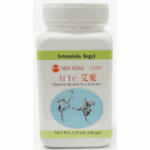
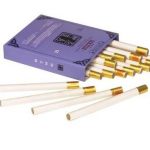
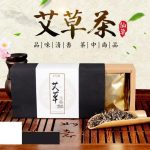
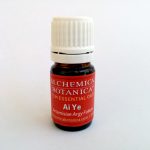
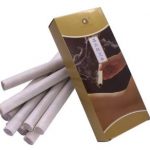

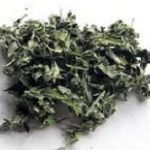
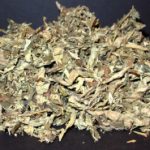
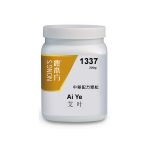
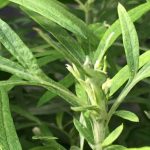
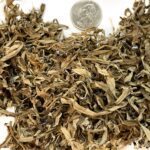
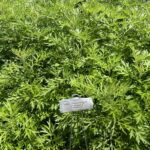
0 Comments